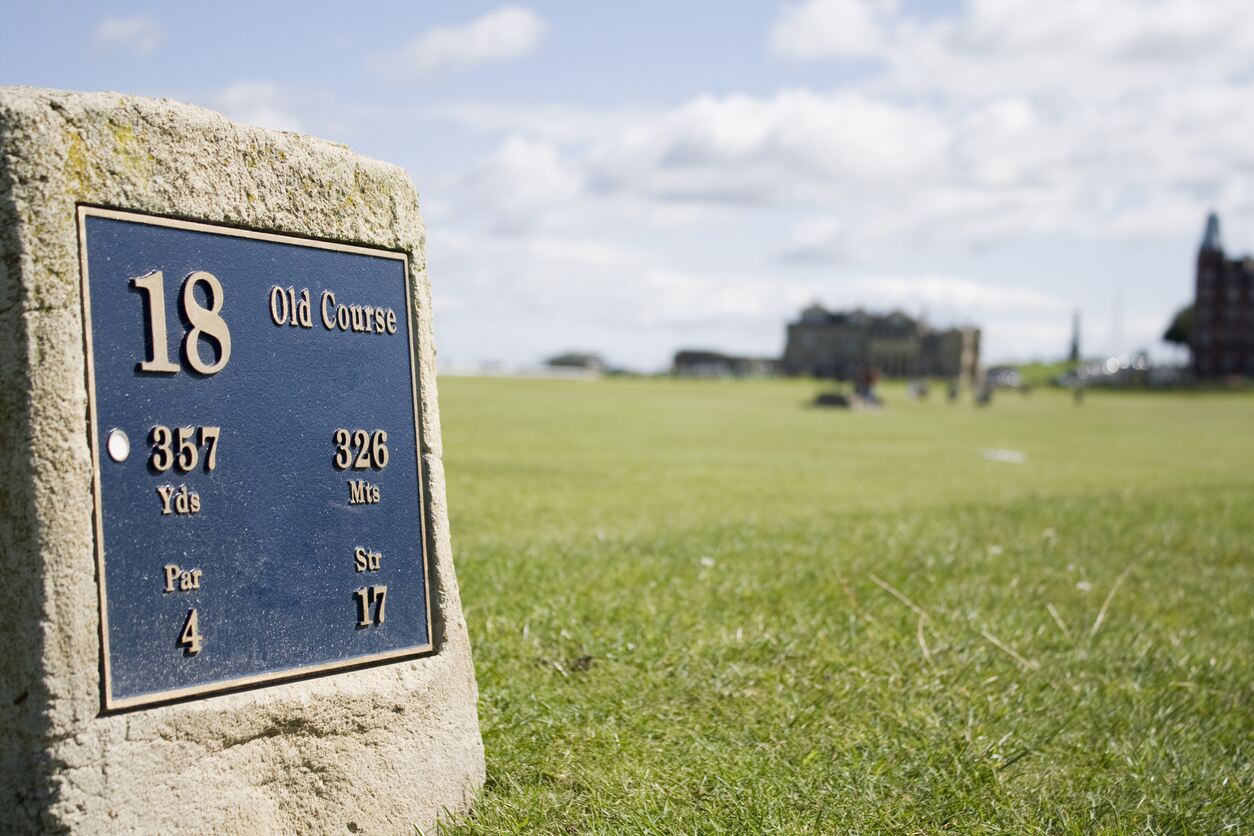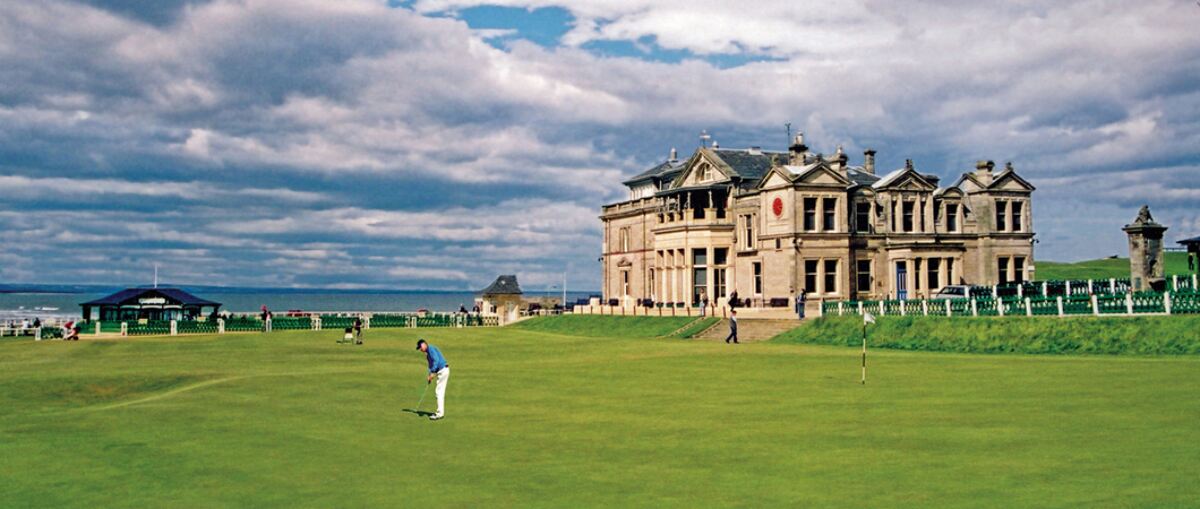Ancient origins
Golf has deeper roots than we might think – ancient ones in fact. The Romans played a game called ‘Paganica’ with a bent stick and a stuffed leather ball. It’s thought this golf-like pastime spread across Europe in the first century BC, when the Empire was also (supposedly) busy conquering the majority of the continent. Historians also debate over the likes of the Chinese game ‘Chuwian’, England’s ‘Cambuca’, and the Dutch game ‘Kloven’, as other possible early variations.
Scotland paves the way
Scotland put its stamp on modern golf in the 15th century. James II actually banned the game in 1457 as he saw it as a distraction from his archery. But this inadvertently created the first written record of golf. The king clearly couldn’t avoid the temptation forever, lifting the ban in 1502 after becoming an avid golfer himself. Since then, Scotland has become home to the standard 18-hole round, birthed at the Old Course at St Andrews in 1764 – the world’s oldest course. Another record-breaker is The Open Championship, first played in 1860 at the Prestwick Golf Club. This is the world’s oldest tournament (that still exists!)
How to play
Thomas Kinkaid, a medical student who played golf in Edinburgh, has gone down in history for his diary. His entries, dated 1687, are the oldest found instructions for the game. He writes about an early handicap system and the best ways to play. More officially speaking, the oldest surviving golf rules trace back to 1744, written for what is now known as The Honourable Company of Edinburgh Golfers, which played at Leith Links. ‘Articles and Laws in Playing at Golf’ can be found in the National Library of Scotland. These rules laid the foundations for all golf codes that followed.

Expansion
Under the reign of Queen Victoria, the 1850s saw increased tourism in Scotland thanks to Balmoral Castle, and better transport services within the UK. There was also the development of the ‘Gutty’, a golf ball made of gutta- percha. This was easy to mass-produce, and worked far better than the feather-filled balls previously used. Thanks to a combination of these developments, golf was more easily able to make waves across the British Isles, in particular England. This caused a domino effect across other parts of the world and golf had become established in Ireland, Australia, New Zealand, Canada, and Singapore by 1891.
America and beyond
Following two competing National Amateur Championships played in 1894, representatives from multiple clubs across US states all met in New York City. They formed what later became called the United States Golf Association (USGA). The Roaring Twenties and a further appetite for golf led to more than 1,111 golf clubs affiliated to the USGA by 1932. Despite challenges and an inevitable slowdown in pace due to the Great Depression and World War II, golf managed to bounce back again. And then some. The number of affiliated USGA clubs had grown to more than 10,600 by 2013. Similar progression in other major nations has helped to make golf the global product it is today, enjoyed by millions.
In the beginning: The brief but essential history of golf
Ever wondered how it all began? Travel back in time to the key events in the history of golf.
11 February 2021 Words by Matthew 1 minute read
RECENTLY VIEWED
